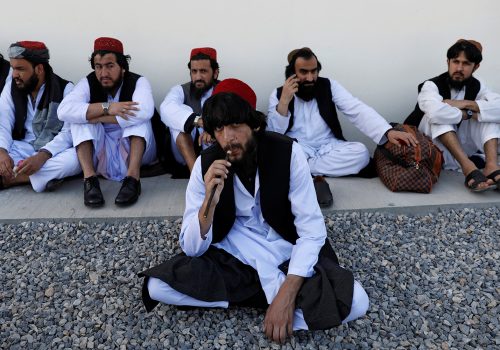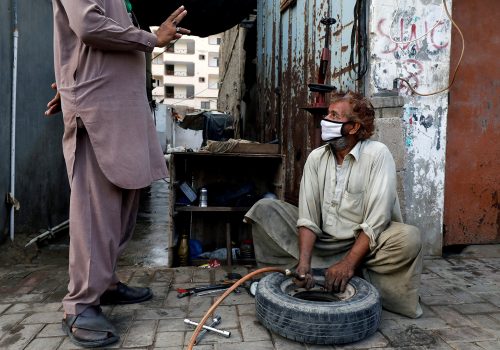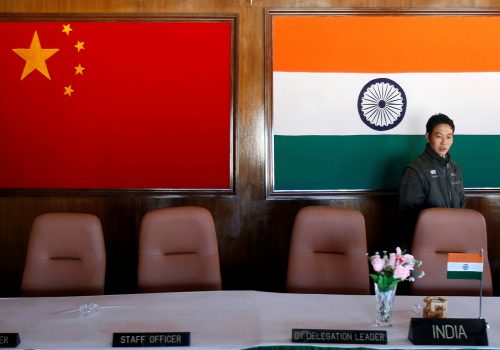South Asia midyear pause: Taking stock of 2020
Introduction
By Irfan Nooruddin
When we published our South Asia: The Road Ahead in 2020 report in late January, we did not anticipate the severity of the COVID-19 pandemic and the immense challenge it would pose for the world, nor did we predict that India and China would engage in militarized conflict in the Himalayas. But as much as reality continues to humble even informed prognostications, the core aspects of our analysis stand up well. The specific events of the year’s first six months might have taken us by surprise—but the political-economic dynamics that have shaped South Asia’s response to these new challenges did not. Across the region democracy and freedom of expression are challenged, and protectionist impulses are indulged in flailing response to calamitous economic strife. The vulnerabilities of the most marginalized are heightened by governments oblivious to their needs. And the United States continues its slide into strategic irrelevance, exercising little leadership or interest in building stronger ties to this vital region.
So what does the rest of the year look like? More of the same, we think, but with the added complication of demands for governments to unlock their societies to restore economic growth even as there is no evidence that coronavirus has been controlled or that public health systems have been strengthened to bear the coming crush of cases. Couple this with aggressive moves by China from Hong Kong to the Himalayas, and a presidential election looming in the United States, and the only safe bet is that the second half of 2020 will also be humbling for those of us foolhardy enough to venture guesses about what the future holds for the region. But we won’t let our sure-to-be-wounded egos stop us. We hope you find our analyses of the challenges faced by each of South Asia’s countries at the midpoint of 2020 useful, and welcome your feedback. Enjoy.
Jump to a country:
India
By Trevor Cloen
The COVID-19 pandemic has imposed a massive and unexpected shock on India’s social, economic, and political landscape. At this writing, India faces uncertainty on its northern border with China, a strained health system, largely unchecked growth of COVID-19 cases, and increasing economic uncertainty.
Humanitarian consequences of COVID-19
The full economic and humanitarian impact of COVID-19 in India has yet to be fully realized. To date, India has confirmed at least 550,000 cases, while 16,500 individuals have died. The current outbreak is heavily concentrated in Maharashtra, Tamil Nadu, and Delhi, where localities have regularly reported daily records in new cases, suggesting that the outbreak has yet to be contained. Already-strained public health services appear unable to accommodate a growing number of patients, with abundant anecdotal accounts of full hospitals and patients being turned away from care.
The human cost of the pandemic has been disproportionately carried by India’s most vulnerable populations. The country-wide lockdown imposed by the Central government in March disrupted long-standing networks of migratory workers from rural villages into the country’s urban centers, depriving millions of employment, the resources required to return home, and in some cases, the means to eat. Elsewhere, those returning to villages have been persecuted due to the belief that they are spreading the virus, while the economic impacts of the pandemic are expected to reverse decades of economic and social gains from women newly excluded from the labor market. Given limited testing capacity and public health resources, it is unclear when the virus’s spread will be contained in India. Until it is, the social and economic impacts on vulnerable populations will continue to grow.
Sino-Indian relations
The June 15 skirmish between India and China in the disputed Galwan Valley that left twenty Indian soldiers dead appears to have surprised members of the Indian political and military establishment. The spectacle of armed conflict and casualties has inflamed anti-China passions and generated calls for both military and economic retaliation. In the short term, the two countries are unlikely to escalate in further conflict. Nonetheless, the border dispute is long-standing, additional incidents are likely in the future, and the newly realized threat of conflict with China has disrupted the careful diplomatic balance that Indian Prime Minister Narendra Modi’s government has courted since 2014.
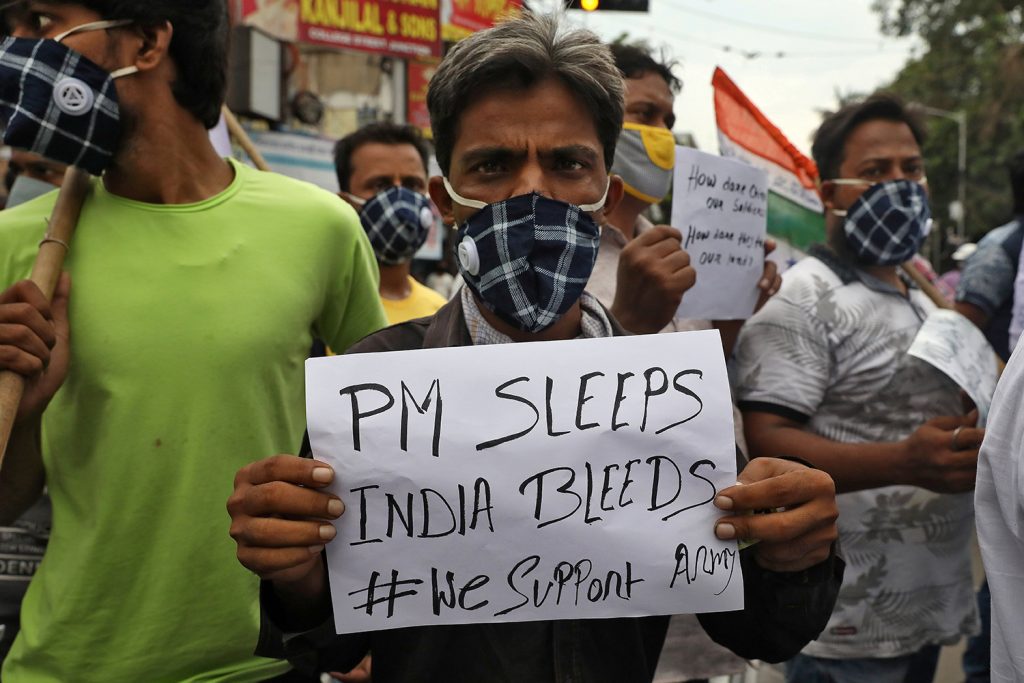
The newly realized threat of conflict with China has disrupted the careful diplomatic balance that Indian Prime Minister Narendra Modi’s government has courted since 2014.
Immediate retaliation appears to be largely economic in nature, including attempts to boycott Chinese goods and discussions of additional tariffs to prevent entry of Chinese goods. However, the conflict has shifted public and political opinion further from cooperation with China, constraining the Indian government’s space for future negotiation and cooperation. The incident has likely ended any chance of India re-entering discussions in the Regional Comprehensive Economic Partnership (RCEP), and the specter of conflict has led to growing calls in political discourse to rethink the wisdom of import dependence on Chinese manufacturers.
Securitization of global supply chains
The global pandemic response and subsequent uncertainty regarding supplies of medicine, personal protective equipment, and commercial goods have prompted governments worldwide to increasingly view global supply chains as a matter of national security. The government of India has reacted to these pressures with varying levels of protectionist responses intended to secure supplies of medicine and reduce reliance on imports. Throughout its tenure, the Modi government has exhibited a combination of protectionist and industry-oriented tendencies intended to develop domestic firms while attracting foreign direct investment in manufacturing. In light of Modi’s remarks on May 12—in which he stated, “the corona crisis has taught us the value of local manufacturing, local markets, and local supply chains”—and the escalating political rhetoric of strategic independence from China, economic policy discussions in New Delhi appear to increasingly be turning inward. Faced with its first economic contraction in nearly four decades and extreme economic disruption from the COVID-19 pandemic, the Modi government appears inclined to increasingly turn to industrial policy reminiscent of import-substitution to promote domestic industry and discourage foreign firms. As the world’s fifth-largest economy and largest single market, any move to further disentangle India from existing global supply chains will have significant implications for international business and the global economy for decades to come.
Pakistan
By Fatima Salman
The more than 200,000 COVID cases in Pakistan have rapidly overwhelmed the country’s health and economic infrastructures. The country is bracing itself for some of its worst numbers in the coming weeks, with the total case count projected to reach one million by the end of July. Declaring victory too early, Pakistani Prime Minister Imran Khan’s indecisiveness has left the country oscillating between tough and loose restrictions as case counts rise daily. With a lack of consistency and leadership from Pakistan’s Tehreek-e-Insaaf (PTI) political party, a referendum on Khan’s rule may come sooner than the next national elections slated for 2023: his opposition is gaining momentum and his challenges are multiplying.
To lockdown or not to lockdown?
As COVID-19 cases continue to spike, Pakistan’s health care systems are buckling. Increasing domestic and international scrutiny comes after Khan’s controversial decision last month to lift the nationwide lockdown prematurely. In June, the World Health Organization (WHO) urged Pakistan to return to lockdown. In a letter to Punjab’s Provincial Health Minister Yasmin Rashid, the WHO warned that Pakistan’s most populous province risked collapse if the government did not take urgent action. In the coming weeks, the world will be watching Khan’s handling of the virus.
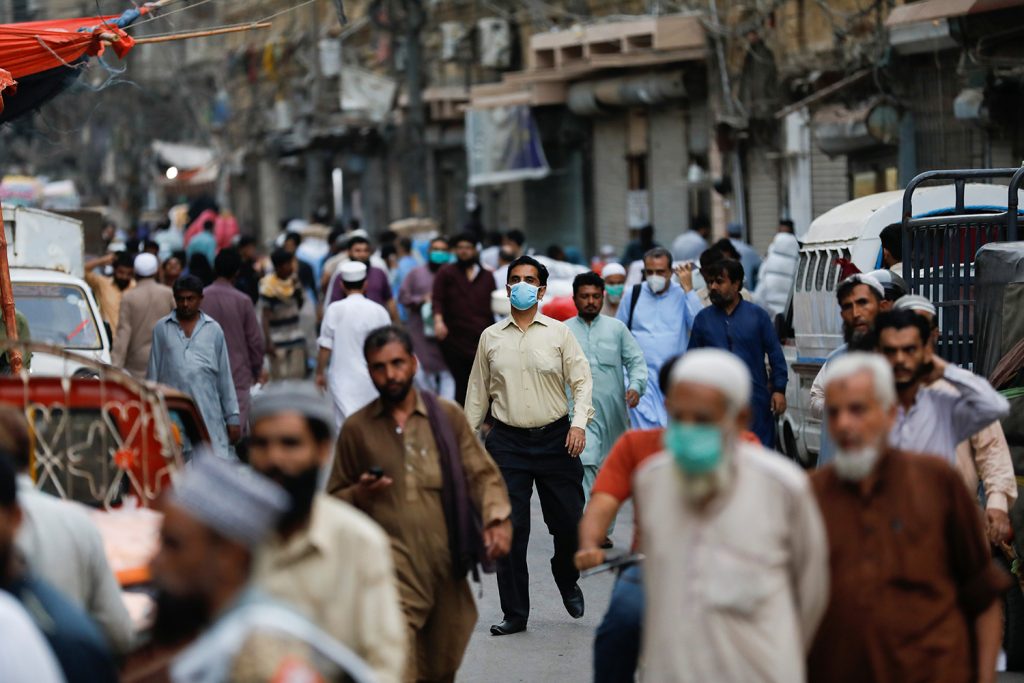
It will not only take a ‘smart lockdown’ to save Khan’s government; it will take an economic miracle powered by innovative and original decision making…
Domestically, the prime minister faces criticisms from all sides, including from military and opposition leaders, following his controversial decision to lift lockdown restrictions. Khan’s mishandling of the pandemic will have lasting effects as the country continues to spiral into chaos economically. Meanwhile, opposition leaders have made it clear that the PTI’s “return to normal” models will not be enough to showcase strength coming out of 2020, as Khan’s “normal” was heavily reliant on economic aid from regional partners and the International Monetary Fund (IMF). It will not only take a “smart lockdown” to save Khan’s government; it will take an economic miracle powered by innovative and original decision making that has not been on display thus far.
Recession after recession
Pakistan is entering a pandemic-induced recession that puts the country’s gross domestic product (GDP) growth at negative 0.2 percent for the financial year that ended in June. When Khan lifted the lockdown on May 9, millions of informal sector workers were unemployed. According to the International Labour Organization (ILO), the battered informal sector normally generates more than 70 percent of the country’s employment outside agriculture. In alarming new projections released by the World Bank, of the 176 million people worldwide expected to be pushed into poverty—making less than $3.20 a day—two-thirds are in South Asia. Meanwhile, Pakistan’s ambitious targets of 2.1 percent GDP growth on the heels of another lockdown set the stage for the compounding disconnect the Khan administration has from the realities on the ground given the most immediate economic disruptions caused by the pandemic. Contrary to Khan’s anti-poverty rhetoric, his recently released 2020-21 budget provided little relief with clear setbacks for programs like the Ehsaas program with further expenditure cuts as revenues will fall short of the ambitious targets. Pakistan’s economy went from experiencing one shock to the next; without a clear and effective response from the government moving forward, the country will need assistance from the IMF, World Bank, and strategic allies like China to resuscitate the country’s economy. The prime minister campaigned as a reformer of the welfare state, the cost of which has led to large budget deficits and a weakened social safety net just when Pakistan needs it most.
Keeping an eye on the neighbors
Pakistan continues to oscillate between raising and easing tensions as a way of gaining diplomatic leverage against external foes. In the coming months, the pandemic will most likely put at least a temporary brake on last year’s rapid escalation of tensions along the Kashmiri border. Currently, India’s preoccupation with other territorial disputes may help in this regard, though it’s possible that Indian Prime Minister Narendra Modi might stoke tensions with Pakistan to distract from the political blowback from the India-China standoff in June. Meanwhile, pressure will mount on Pakistan to support US efforts in the landmark intra-Afghan dialogues in its ongoing efforts to retain influence in war-ravaged Afghanistan.
Afghanistan
By Harris Samad
While negotiations between the Afghan government and the Taliban struggle to gain traction, Afghanistan continues to face formidable challenges such as strained relations with the United States, embedded illicit economic and financial networks, and the still-unfolding COVID-19 pandemic. However, Afghanistan’s vibrant civil society sector stands out as a bright spot, fighting for a substantial voice in the peace process and in Afghan political affairs more generally.
Afghan civil society
The limited inclusion of Afghan civil society in the peace process hinders the potential for a just peace. While the power-sharing agreement between President Ashraf Ghani and Dr. Abdullah Abdullah has a clause specifically speaking to the inclusion of civil society as consultants and councilors in the High Council of National Reconciliation, civil society’s role must be clarified and strengthened. A mandate for the inclusion of civil society in political and reconciliation matters would do much to percolate the peace process down to incorporate the voices of everyday Afghans. The United States and its allies should do more to pressure Afghanistan to include civil society in the peace process.
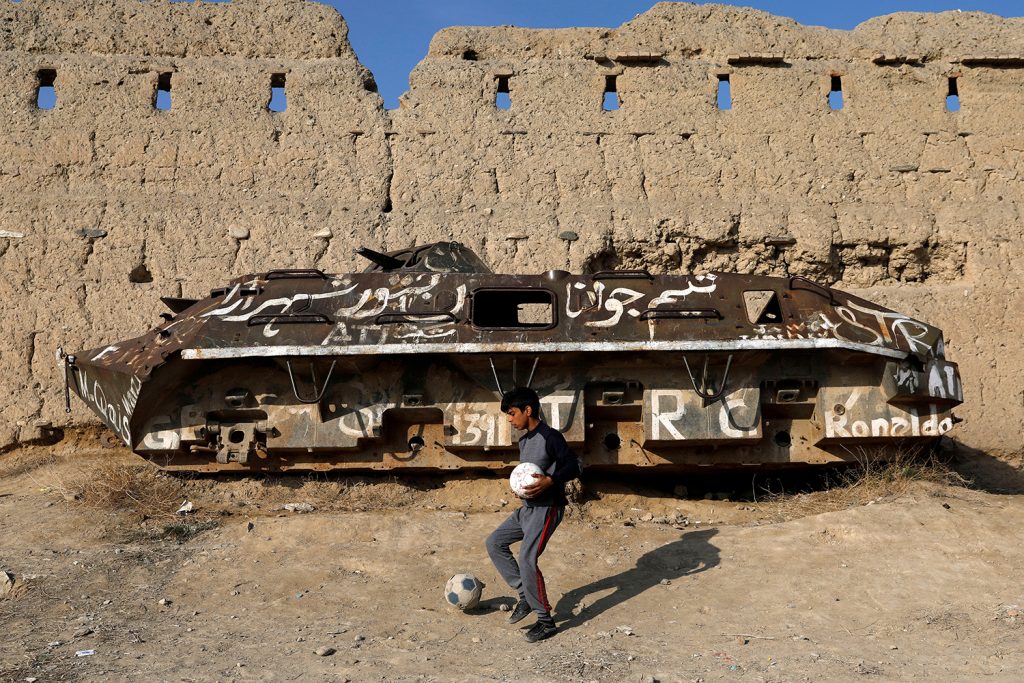
The space created by US President Donald J. Trump’s administration and its limited appetite for engagement… presents an opportunity for Moscow to engage and help to shape post-war Afghanistan.
Russian involvement in Afghanistan
Russia continues to play an increasing role in Afghanistan. In September 2019, Moscow hosted a Taliban delegation following a halt in US-Taliban negotiations. This past March, Russian President Vladimir Putin’s envoy to Afghanistan Zamir Kabulov said, “we want to have normal ties with any new administration in Kabul.” The implication of this statement is likely that Moscow seeks to normalize relations with the Taliban. This is not to suggest that Russian involvement is intrinsically good or bad for Afghanistan. Rather, the space created by US President Donald J. Trump’s administration and its limited appetite for engagement—especially as the United States approaches a general election—presents an opportunity for Moscow to engage and help to shape post-war Afghanistan. This is supported by the controversial allegation that Moscow offered the Taliban bounty payments to target US forces which, though Trump later branded as “not credible,” may indicate that Russia is not only strongly invested in Afghanistan but is taking an opportunity to “flex” its influence amid a retraction of US involvement around the world.
A potential power-sharing agreement between Kabul and the Taliban
As the negotiations between the Afghan government and the Taliban approach, the Ghani administration and Taliban leadership face many difficult decisions. Afghanistan’s struggle to deepen its state capacity presents a possible point of leverage for the Taliban: should the two finalize an agreement, the Taliban could end up being integrated into the state bureaucracy to satisfy its demands and also to help the government consolidate control across the country. Such a scenario places the United States, who will likely design a robust post-withdrawal development and security sector assistance program, in a difficult position. Supporting a government that includes the Taliban will undoubtedly be a thorny issue, but it may be the only path to support post-war Afghanistan should a deal be struck.
Long-term effects of COVID-19
Afghanistan’s struggle to increase testing capacity for COVID-19, in conjunction with long-running healthcare sector deficiencies, poses a serious threat to its domestic and international legitimacy. Concerns continue to arise about international COVID-related economic and medical assistance falling victim to illicit financing and patronage networks as well as government corruption. These and other issues serve not only to weaken the government’s grip on power, but they also contribute to an economic slowdown ripe for manipulation by authoritarian, corrupt, and extremist interests alike.
Bangladesh
By Fatima Salman
Bangladesh has failed to contain COVID-19. Initial dismissal of the outbreak and the resulting poorly planned lockdown illuminated underlying domestic problems in Bangladesh and shocked the country’s health and economic infrastructures. Poor governance coupled with major blows to an otherwise positive economic outlook has left the most vulnerable segments of society in flux, including the garments and textiles industry which account for almost 12 percent of Bangladesh’s GDP. With the economy shrinking and poverty rising at alarming rates, Bangladeshi Prime Minister Sheikh Hasina’s government is teetering on the edge of a crisis.
Structural realities: Livelihood tradeoffs
The initial missteps from the Bangladesh government and lackluster mitigation efforts in response to COVID-19 have exposed the country’s inadequate social safety nets. The pandemic has exacerbated the already existing inequalities and unequal power dynamics in Bangladesh. With industrial and government workers forced to risk their lives to maintain their livelihoods, the COVID-19 outbreak has heightened structural realities of the health system, which have historically been inaccessible to the poor. The uneven relief distribution has left the marginalized—refugees, sex workers, members of the LGBTQ community, and Dalits—doubly disadvantaged.
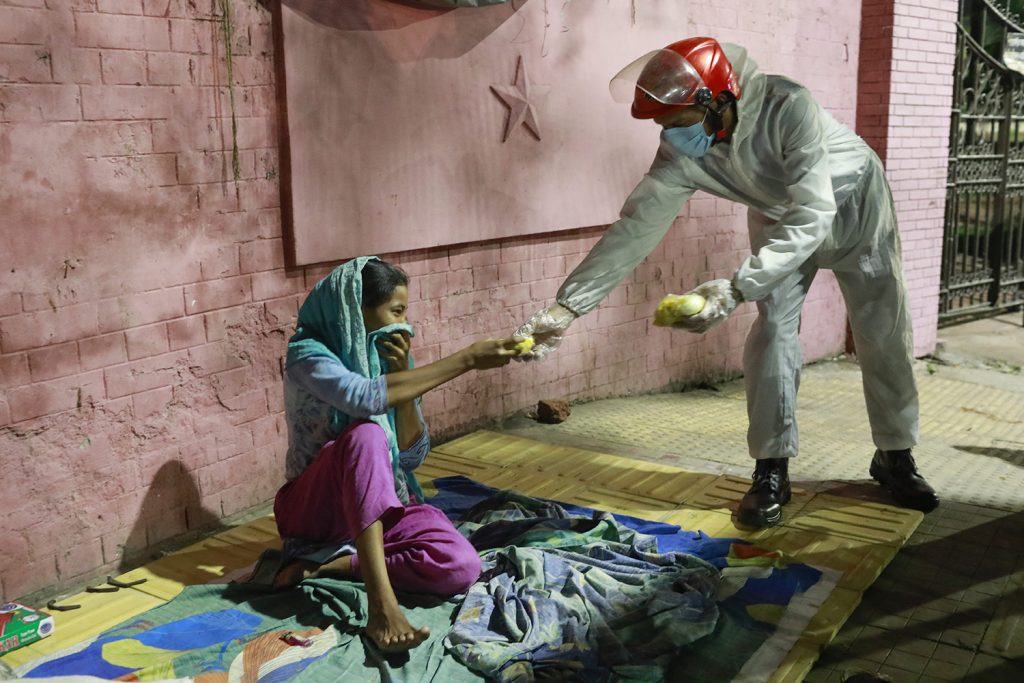
Six million workers in Bangladesh’s formal economy will be without steady work as market confidence deteriorates with a growing number of COVID-19 cases.
A tale of two poverties: Too poor for a lockdown
With a sharp decline in exports and remittances, Bangladesh’s economy has been severely impacted by the COVID-19 pandemic. The Ready-Made Garments (RMG) sector’s collapse threatens the country’s macroeconomic stability. Although the IMF emergency financial assistance may help cover financing gaps and temporarily contain the impact of the pandemic, 50 million workers in the informal sector—and many others—are being pushed into poverty. Meanwhile, six million workers in Bangladesh’s formal economy will be without steady work as market confidence deteriorates with a growing number of COVID-19 cases. Thus, Bangladesh has a tale of two poverties: the preexisting poor and a new generation teetering on the poverty line. Hasina’s COVID-19 stimulus package, announced in April, failed to address the risks faced by the most vulnerable sections of society. As the pandemic becomes the new reality for Bangladeshis, pressure is starting to mount for a collective response from global brands and retailers to enhance factory safety, another step in remedial plans to improve worker safety following the 2013 Accord on Fire and Building Safety and the Alliance for Bangladesh Worker Safety.
Squeezing civil society
Bangladesh’s ongoing crackdown campaign on migrants, journalists, and civil society has severely undermined its efforts to fight the pandemic. The country’s Digital Security Act (DSA) was used to justify the Awami League’s (AL) strict crackdown in March and raids in locked-down areas to arrest and detain journalists. Such attacks on the freedom of the press are counterproductive for battling COVID-19 and bolstering international investor confidence in domestic governance.
Sri Lanka
By Phillip Baumgart
Halfway through 2020, Sri Lankan President Gotabaya Rajapaksa has seemingly made good on his campaign promises of strengthening national security and centralizing governance. While the president’s Sinhalese-nationalist base lauds his tough stance on terrorism and his government’s commendable response to the coronavirus, minorities lament the return of Sri Lanka’s toxic majoritarian politics. Aside from democratic erosion and a polarized political landscape, Sri Lanka faces formidable macroeconomic challenges made worse by the pandemic.
Troubled political landscape
In the first half of 2020, Sri Lanka witnessed a marked consolidation of power and significant democratic backsliding under Rajapaksa. Appointing a military band of brothers into high levels of government, the president has created a “normalization” of military influence in the civilian sphere. Meanwhile, Prime Minister Mahinda Rajapaksa (the president’s brother and former president)—to the ire of the island’s Tamil minority—has dispensed with Sri Lanka’s commitments to a 2015 UNHRC resolution on transitional justice investigations into the atrocities of the recent civil war.
Rajapaksa’s presidency has likewise coincided with shrinking space for civil discourse. He severely limited the expression of various civilian agencies—including the National Secretariat for Non-Governmental Organizations—by placing them under direct control of the Defense Ministry. With a recent Defense Ministry-drafted cybersecurity law penalizing “defamatory” social media posts, journalists and minority activists report a re-established “state of fear” with an increase in surveillance, harassment, and threats.
Rajapaksa dissolved parliament in early March in anticipation of the April parliamentary elections. Due to the pandemic, the twice-postponed elections are now slated for August 5. Sri Lanka consequently finds itself in uncharted territory in July 2020 as the nation moves beyond its constitutionally-mandated, three-month maximum for a parliamentary recess. Refusing to reconvene parliament, the president now rules unfettered by legislative oversight.
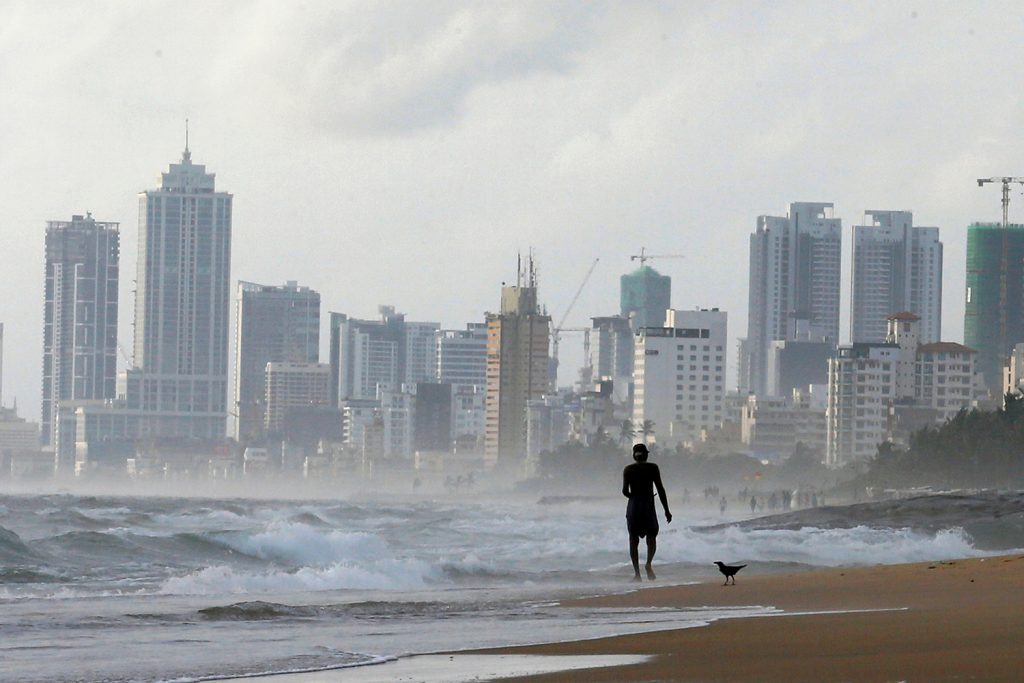
Sri Lanka under Rajapaksa will almost surely move further into China’s political and economic orbit.
The upcoming parliamentary elections will be an indicator of the island’s future political direction. Given the government’s strong pandemic response and the fractured opposition (the United National Party, or UNP), Rajapaksa’s party—the Sri Lanka Podujana Peramuna (SLPP)—is highly favored. With an SLPP victory nearly inevitable, de-facto opposition leader Sajith Premadasa has already pledged to work with Rajapaksa towards a “disciplined society.” A decisive factor is whether the SLPP can secure a two-thirds majority, which would allow Rajapaksa to dismantle Amendment 19, a constitutional artifact of the previous government that imposes limits on presidential power.
Growing financial woes
Sri Lanka entered 2020 already faced with a host of macroeconomic challenges, most notably slow growth and high debt. The pandemic has further imperiled its financial standing, pushing the island’s debt ratio above 90 percent of GDP. Despite approximately $4.8 billion in loan payments due this year, Rajapaksa’s government has signed onto an additional $1 billion in Chinese financing for pandemic relief. Conditions may require Sri Lanka to strike a new deal with the IMF, but doing so will prove challenging as the president derailed the current IMF program by slashing taxes upon assuming office. As such, producing decisive fiscal policy will be a top priority of the reconvened parliament in August. Sri Lanka under Rajapaksa will almost surely move further into China’s political and economic orbit, but it will not do so entirely so long as it retains strong trade links to India and Europe.
Nepal
By Capucine Querenet
Halfway through 2020, Nepal is diving headfirst into a severe domestic crisis brought on by COVID-19; the country’s economic ambitions are under threat, protests are erupting across the country, and India-Nepal relations are in jeopardy. Despite Nepal’s brush with political stability—the ruling Nepal Communist Party has stayed in power for two years uninterrupted—2020 foreshadows a lengthy and tedious process to restore the economic and political progress made pre-pandemic.
Mismanagement of the pandemic
Nepali leadership remains lackluster when disaster strikes. Mismanagement of the 2015 earthquake only exacerbated the effects of COVID-19 in 2020, evident by the lack of medical infrastructure, a drastic rise in poverty, and increased dependence on remittances, among other effects. Continued poor leadership will leave behind a devastated economy and aggravate longstanding patterns of structural inequality, ultimately undermining the current administration and revealing widespread grievances among the population.
Dissatisfied citizens have begun to orchestrate peaceful protests but have been met with police brutality, including the use of water cannons, batons, and tear gas. The use of such measures to squash protests represents a stark contrast to the federal democratic republic Nepal aspires to be. Overall, corruption, inefficiency, and a lack of accountability portend a bleak outlook for Nepal’s future if its leaders do not address the pandemic rigorously and quickly.
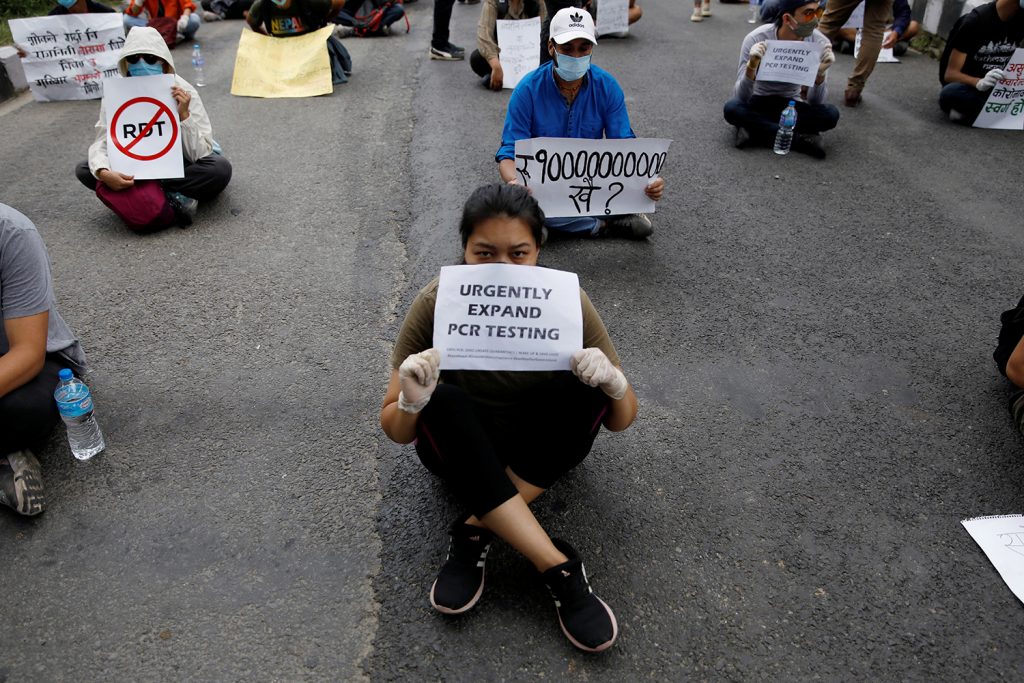
Continued poor leadership will leave behind a devastated economy and aggravate longstanding patterns of structural inequality.
Anti-Indian nationalism and shifting geopolitics
The recent India-Nepal border dispute exacerbated tensions between the two countries—evidenced by the #BackoffIndia protests in Nepal—and highlights shifting domestic and international dynamics for the country. For the country’s beleaguered Prime Minister K.P. Sharma Oli, the bilateral tensions provide a distraction from the worsening internal crisis he faces. Oli quickly diverted attention from his failure to contain the pandemic by drawing upon anti-Indian nationalism to consolidate power, similar to tactics used in the previous election. If Oli is unable to thrive on a political diet devoid of anti-Indian nationalism, the domestic challenges he faced prior to the border row are bound to resurface with increased fervor and hint at renewed political instability.
Chinese involvement in Nepal
Amid the heated interactions between Nepal and India lies a silent bystander: China. Over the years, the regional titan has gradually increased its involvement in Nepal’s political and economic spheres, notably through the Belt and Road Initiative. Participation in the program could catalyze Nepal’s transition from a landlocked to a land-linked nation, ultimately providing access to new markets and financing for improved infrastructure. Despite the incentives offered by China, Nepal must be cautious in proceeding in the program, for a relationship with the superpower puts democracy at risk in favor of creeping authoritarianism. Instead, Nepal should focus on building relations with surrounding neighbors, including Bhutan and Bangladesh; a strategic alliance between the three smaller South Asian countries could serve to counter pressures from India and China, reduce their dependence, and build towards greater political and economic stability.
The Maldives
By Shariq Farooqi
Midway through 2020, the pandemic’s unsettling impact on the island nation of the Maldives has revealed a slew of issues: an urgent need for economic diversification, an increased reliance on fossil fuels, and a disparity between the interests of religious fundamentalist groups and legalized protection of human rights. In the subsequent months, the Maldives will be confronted with economic obstacles and fundamentalist objection to human rights protections.
Economic diversification in a post-COVID-19 world
The Maldives faces a daunting economic recovery as the pandemic continues to be a detriment to the global economy. Due to the shutdown of tourism, the main driver of the Maldivian economy, economic growth will contract between 13 and 17.5 percent in 2020. In order to mitigate the losses from the tourism sector, the Maldivian government has rolled out stimulus relief packages like the Sustainable Economic Empowerment and Development for Small and Medium Enterprises (SEEDS), aiming to support households adversely affected by COVID-19 as well as at least two thousand micro, small, and medium-sized enterprises. Maldivian Minister of Economic Development, Uz. Fayyaz Ismail, has boosted the SEEDS initiative to jumpstart the agriculture sector after COVID-19. Although the Maldives continues to grapple with its over-dependence on tourism, the World Bank predicts a slow and steady economic recovery ahead as it opens its borders to tourists in July.
An upcoming transition to renewable energy
Considering the pandemic-caused depletion of its energy supply, the Maldives is even more susceptible to the effects of climate change. The Maldives procures its energy supply almost entirely from fossil fuels. However, burning fossil fuels produces 94 percent of total emissions in the Maldives, making the archipelago’s carbon footprint on average significantly higher than that of the rest of South Asia. Amid growing demand for electricity across the islands, the country is aiming to reduce the import of fossil fuels and its related costs as these absorb a fifth of the country’s imports. The government aims to augment its share of renewable energy by 20 percent in 2023 and expand further to 70 percent by 2030. Consequently, $300 million of investment is indispensable in order for the Maldives to reach these lofty goals by the prescribed target years. If it successfully manages to procure investment for renewable energy sources, a major strain on government finances may be alleviated.
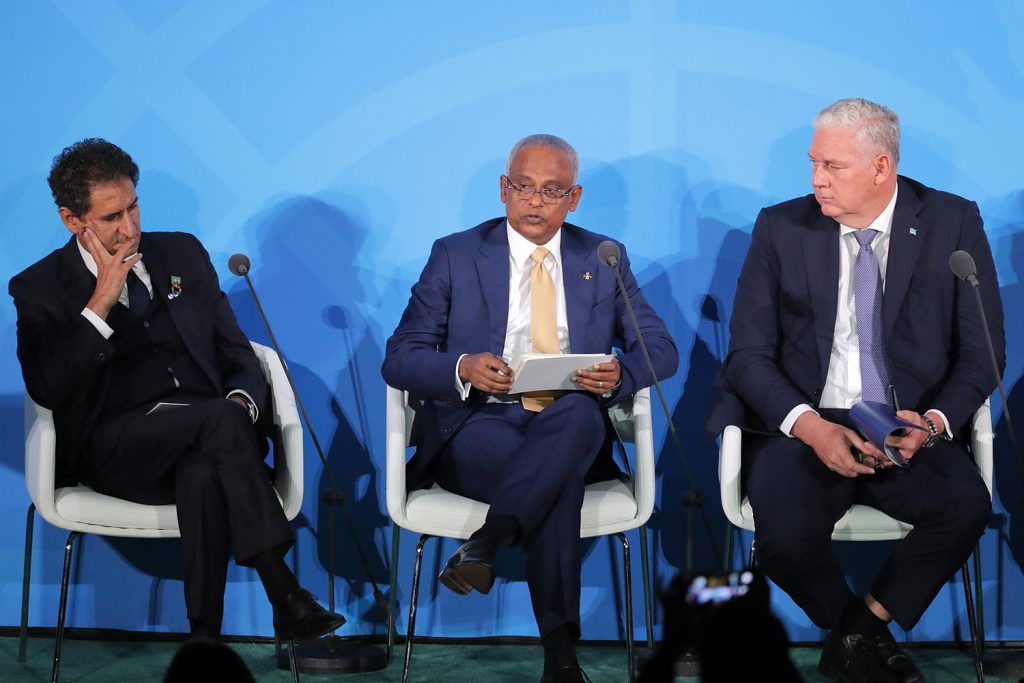
The government aims to augment its share of renewable energy by 20 percent in 2023 and expand further to 70 percent by 2030.
Stagnation of human rights and erosion of secular politics
As reports of sexual violence in public spaces and in the workforce become increasingly persistent, Maldivian President Ibrahim Mohamed Solih has yet to enact a legislative framework to protect victims. Guesthouses owned by the Ministry of Tourism in the capital city, Malé, have become repeat targets of sexual offenders, raising concerns over the absence of legislation protecting public spaces, as the Sexual Harassment Act of 2014 merely protects personal spaces. Although cases are increasingly reported in 2020, the lack of arrests or indictments has prompted demands for Solih to curb sexual violence crime rates in the upcoming months.
Insufficient civil liberty protections can be partially ascribed to the rising momentum of religious fundamentalist groups. Ultra-nationalist groups are pressuring Solih to disband the leading women’s rights organization in the Maldives. Roughly a year into the new government’s rule, the purported “national unity” administration already succumbed to coercion as the regime banned the human rights charity Maldivian Democracy Network. Furthermore, the Maldives is facing backlash from the Human Rights Watch for the criminal justice system’s protection of extremist groups. If Solih continues to pacify fundamentalist groups, then it may result in the outlaw of moderate and secular politics, coupled with a deterioration of human rights.
Bhutan
By Sophie Mae Berman
Sandwiched between two anthropogenic emission giants locked in a supra-regional power struggle, Bhutan’s 2020 outlook will be shaped by a need to bolster regional relationships. Bhutan’s environmentally driven economy has founded sustainable development blueprints, but its hydropower, tourism, and agriculture industries’ reliance on natural resources and processes will make it a vulnerable target of climate change. In the wake of COVID-19, the country’s exclusive dependence on India will demand a focus on evolving multi-alignment.
Green economic challenges and potential
The hydropower sector is the backbone of Bhutan’s revenue and GDP. However, Bhutan’s dependence on India and lack of other international partnerships have made the country ripe for collateral damage. The pandemic caused a nation-wide economic slowdown in India, which in turn reduced energy demands by 30 percent, causing widespread liquidity shortages for hydropower suppliers in Bhutan. The electricity industry also presents job market limitations, as it is capital intensive, offering little relief to Bhutan’s high youth unemployment rate. Travel restrictions due to the pandemic and their uncertain duration pose a continued threat to Bhutan’s tourism sector supply chains.
Agriculture, which accounts for over half of Bhutan’s labor force, is an opportunity for growth. As the flow of people, goods, and services along the border between India and Bhutan halted, the shutdown provides an occasion to wean the country off expensive imports and boost independent production. Women’s substantive participation in informal, family-based agricultural work amplifies the need for protective labor laws to address gender inequality within the expanding field. Though the temporarily restricted border with India has inhibited substantial people-to-people exchanges, it presents Bhutan with a brief window to increase domestic connectivity as an alternative economic stimulus by broadening its transport infrastructure and fiber optic intranet system. This will initiate a competitive preparedness for regional market integration.
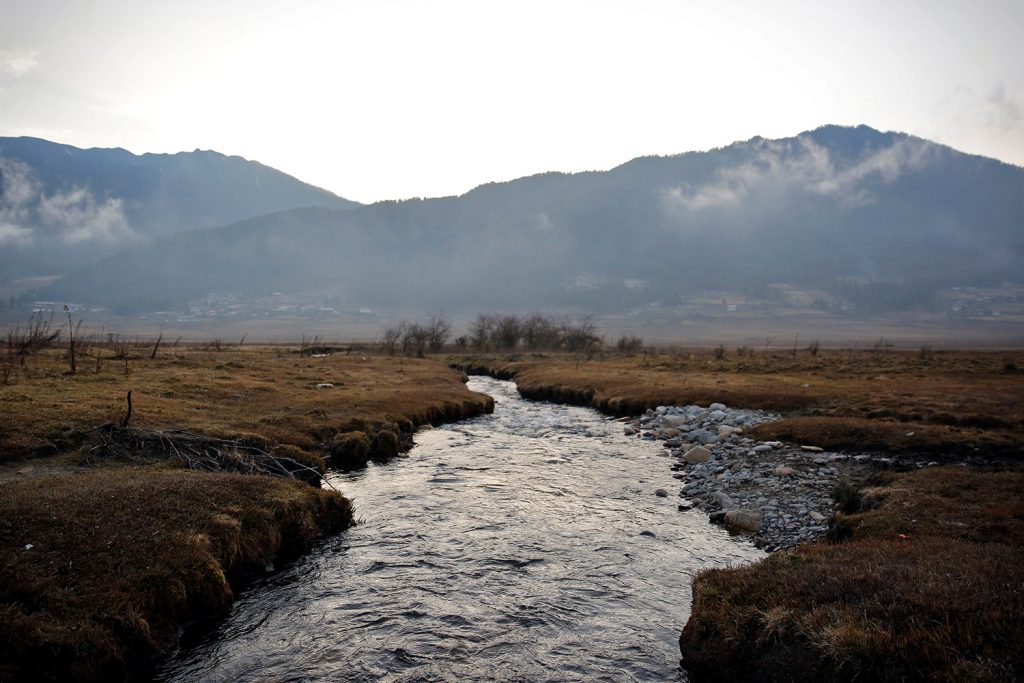
Accelerated environmental change will threaten Bhutan’s economy. Strengthening ecological protection and economic diversification is critical for sustainable growth.
Bhutan’s economic pillars also heavily depend on predictable climate cycles, which impact water resources, forest cover, and biodiversity. Accelerated environmental change will threaten Bhutan’s economy. Strengthening ecological protection and economic diversification is critical for sustainable growth. COVID-19’s mandate for self-reliance may see an intense contest between Bhutan’s environmental linkage and survival imperative. In March, the cost of food rose by 6.5 percent. Bhutan will need to strike a decisive balance between a climate-friendly economic roadmap and people’s human right to food and supplies; it must design a way forward that safeguards the country from falling into the traps of cost-effective, pollutant-based methodologies or becoming a hostage of aid politics to prioritize conservation.
Doklam boundary dispute
In 2017, tensions along the Doklam boundary flared between Bhutan and both India and China. Amid the coronavirus pandemic, the security risk of the dispute is heightened, beckoning the prospects of sovereignty infringement. India and China are struggling to meet the challenges of the COVID-19 public health crisis and its triggered economic insecurity. They will construct hostile geopolitical strategies to garner domestic unity and regional leverage. Bhutan should pursue a multi-alliance agenda to inaugurate consensus-building dialogues.
Minority rights and civil liberties
Bhutan’s criminalization of dissent and difference demands reform. Citizenship laws in the 1980s targeting the Lhotshampa, a minority ethnic group, were followed by their incarceration, torture, and forced displacement from the 1990s onward. The population, constituting 20 percent of the country, continues to face discrimination today. Democratic struggle is also evident in self-censorship of a once emerging field of vibrant, investigative journalism. Reporting is now considered a dead end, government-mouthpiece job. Rising visibility of the LGBTI community and the Lower Parliament’s move to decriminalize gay sex signals hope in expansion of freedoms and marginalized group protections.

The South Asia Center is the hub for the Atlantic Council’s analysis of the political, social, geographical, and cultural diversity of the region. At the intersection of South Asia and its geopolitics, SAC cultivates dialogue to shape policy and forge ties between the region and the global community.
The authors
Irfan Nooruddin is director of the Atlantic Council’s South Asia Center and professor in the School of Foreign Service at Georgetown University.
Trevor Cloen is an assistant director in the Atlantic Council’s South Asia Center.
Fatima Salman is an assistant director in the Atlantic Council’s South Asia Center.
Harris Samad is a project assistant in the Atlantic Council’s South Asia Center.
Phillip Baumgart is an intern at the Atlantic Council’s South Asia Center.
Capucine Querenet is an intern at the Atlantic Council’s South Asia Center.
Shariq Farooqi is a fellow with the American Pakistan Foundation.
Sophie Mae Berman is an intern at the Atlantic Council’s South Asia Center.
All photos are courtesy of REUTERS.
More from the South Asia Center:
Image: A general view of housing in the capital city of Thimphu, Bhutan, December 11, 2017. REUTERS/Cathal McNaughton
